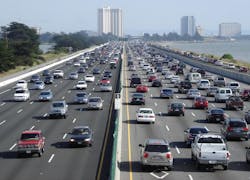Public Transportation Eyed for Improving Road Safety
It is ten times safer per mile to travel by public transportation than it is to travel by car according to a report that was recently released by the American Public Transportation Association (APTA).
“The Hidden Transportation Safety Solution: Public Transportation” comes from a study that revealed public transportation is one of the most effective safety tools in saving lives and reducing traffic crashes. APTA Acting President and CEO Richard White said transit passengers have less than a tenth the per-mile crash rates of those traveling by automobile and communities where residents average more than 50 annual transit trips have about half the highway fatality rate as more car-centric cities.
The report looks at how local planning plays a role in safety and how traffic safety strategies and design factors affect crash rates, as well as how local policies and planning practices can increase safety. It also lays out transit safety strategies, evaluates the safety impacts of pro-transit strategies and highlights some of the common misconceptions and objections to treating public transportation improvements as traffic safety strategies.
Dr. Bella Dinh-Zarr, vice chair of the National Transportation Safety Board (NTSB), which aims to improve transportation safety for all modes of travel, said the greatest number of deaths occur on roads and highways. “Motor vehicle crashes continue to be one of the leading causes of death and injury of people of all ages.”
She said public transportation is a tool in reducing traffic deaths and injuries because, in part, it provides options for high-risk groups, particularly older drivers, younger inexperienced drivers and those that have been drinking.
Americans value freedom of transportation, and freedom of mobility choices, she said. “Our job at NTSB is to help people move safely no matter whatever mode they choose.”
Dr. Susan Polan, associate executive director of the American Public Health Association (APHA), which champions for the health of all people and all communities, said to achieve their vision, they have to work outside the health field to get people healthy. “Transportation policy is one place we can make a difference,” she said.
Polan said transit has the opportunity to improve health equity in communities that are underserved. “It provides access to services, jobs and other benefits. For these reasons, APHA has been on this issue and will be in this arena.”
View the full report at www.MassTransitmag.com/12254172
